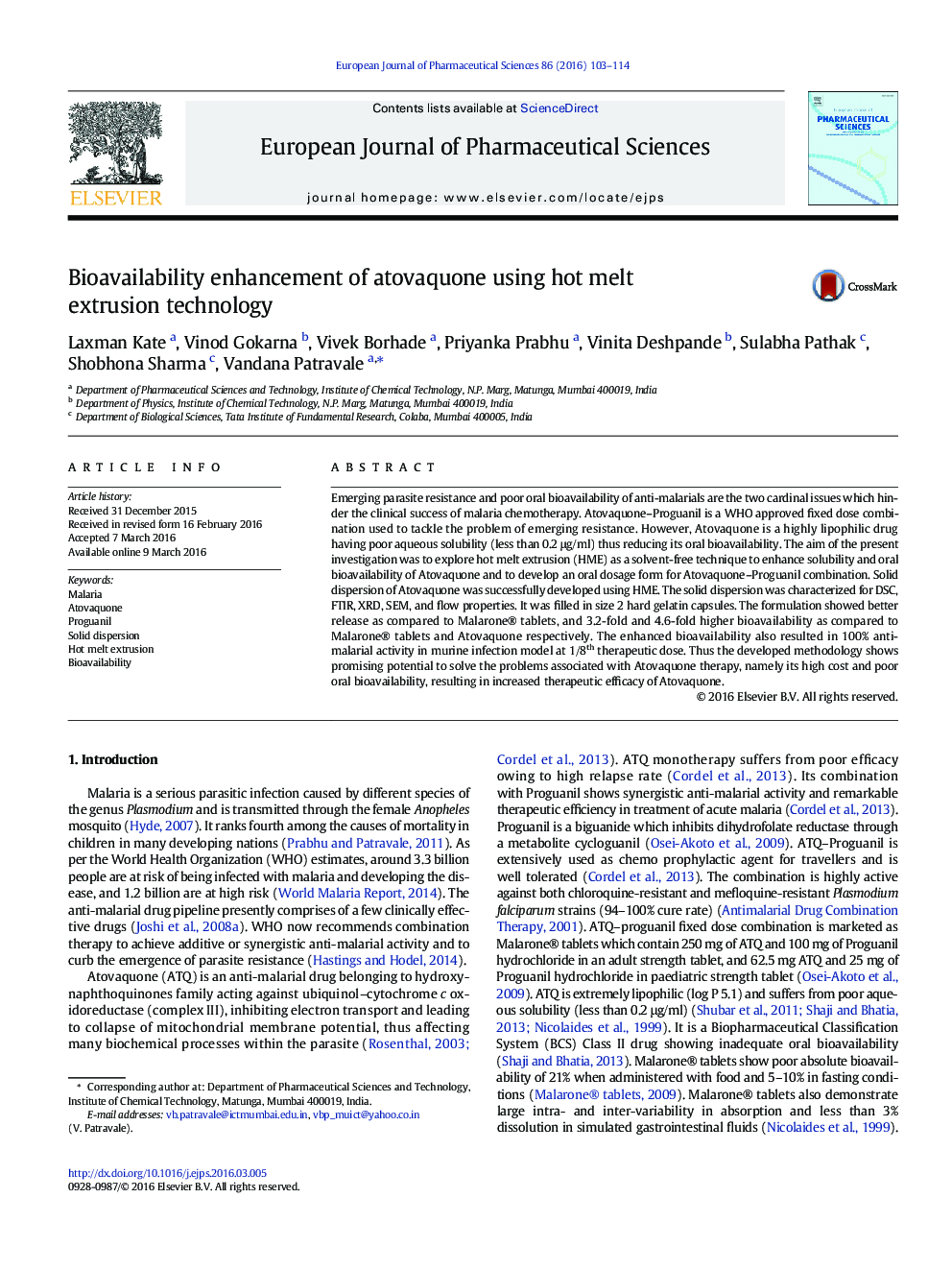| کد مقاله | کد نشریه | سال انتشار | مقاله انگلیسی | نسخه تمام متن |
|---|---|---|---|---|
| 2480070 | 1556164 | 2016 | 12 صفحه PDF | دانلود رایگان |
Emerging parasite resistance and poor oral bioavailability of anti-malarials are the two cardinal issues which hinder the clinical success of malaria chemotherapy. Atovaquone–Proguanil is a WHO approved fixed dose combination used to tackle the problem of emerging resistance. However, Atovaquone is a highly lipophilic drug having poor aqueous solubility (less than 0.2 μg/ml) thus reducing its oral bioavailability. The aim of the present investigation was to explore hot melt extrusion (HME) as a solvent-free technique to enhance solubility and oral bioavailability of Atovaquone and to develop an oral dosage form for Atovaquone–Proguanil combination. Solid dispersion of Atovaquone was successfully developed using HME. The solid dispersion was characterized for DSC, FTIR, XRD, SEM, and flow properties. It was filled in size 2 hard gelatin capsules. The formulation showed better release as compared to Malarone® tablets, and 3.2-fold and 4.6-fold higher bioavailability as compared to Malarone® tablets and Atovaquone respectively. The enhanced bioavailability also resulted in 100% anti-malarial activity in murine infection model at 1/8th therapeutic dose. Thus the developed methodology shows promising potential to solve the problems associated with Atovaquone therapy, namely its high cost and poor oral bioavailability, resulting in increased therapeutic efficacy of Atovaquone.
Graphical AbstractFigure optionsDownload high-quality image (115 K)Download as PowerPoint slide
Journal: European Journal of Pharmaceutical Sciences - Volume 86, 30 April 2016, Pages 103–114
